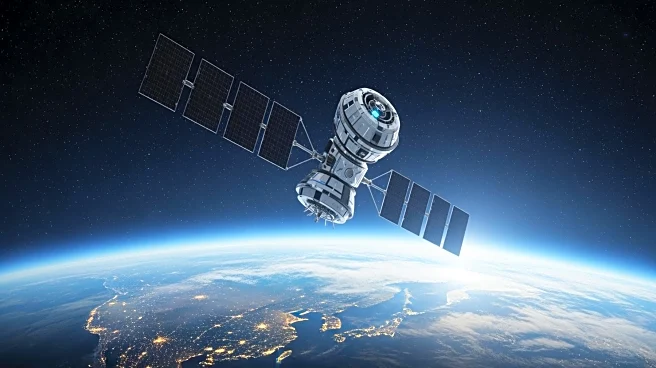What's Happening?
The Royal Australian Navy (RAN) is exploring the integration of Japan's Unmanned Surface Vehicle (USV) into its fleet to enhance mine countermeasure capabilities. This initiative is part of a broader effort
to modernize the RAN's surface fleet, particularly focusing on the Arafura-class Offshore Patrol Vessels and Hunter-class frigates. The Japanese USV, already in service with the Mogami-class frigates, offers a proven solution for mine warfare, potentially reducing the time and cost associated with developing a domestic system. The integration process includes a feasibility study, negotiations with Japanese counterparts, and a pilot program to validate the system's capabilities.
Why It's Important?
Adopting the Japanese USV could significantly enhance the RAN's operational readiness and reduce risks associated with developing an indigenous solution. This move would expedite the deployment of mine countermeasure capabilities, ensuring the RAN can address critical vulnerabilities more swiftly. The integration of a proven system minimizes technical uncertainties and cost risks, providing operational confidence. Additionally, this collaboration could strengthen defense-industrial ties between Australia and Japan, offering logistical and operational commonality that benefits both nations.
What's Next?
The RAN plans to initiate a feasibility study within the next three months, aiming for completion in six months. Concurrently, negotiations with Japanese counterparts will begin to establish necessary partnerships and framework agreements, with a target completion within 12 months. A pilot program is expected to commence within 15 months, lasting about six months, to test the system across various operational scenarios. These steps are designed to ensure the efficient delivery of mine countermeasure capabilities to the RAN.
Beyond the Headlines
Integrating the Japanese USV into the RAN fleet could lead to long-term strategic benefits, including enhanced interoperability with Japan and reduced maintenance and logistics risks. Establishing a shared maintenance and logistics chain with Japan could bolster Australia's defense-industrial resilience, though it requires measures to ensure operational independence. Engaging Australian defense industries in the production and maintenance of spare parts could further secure supply lines and reinforce operational sovereignty.












